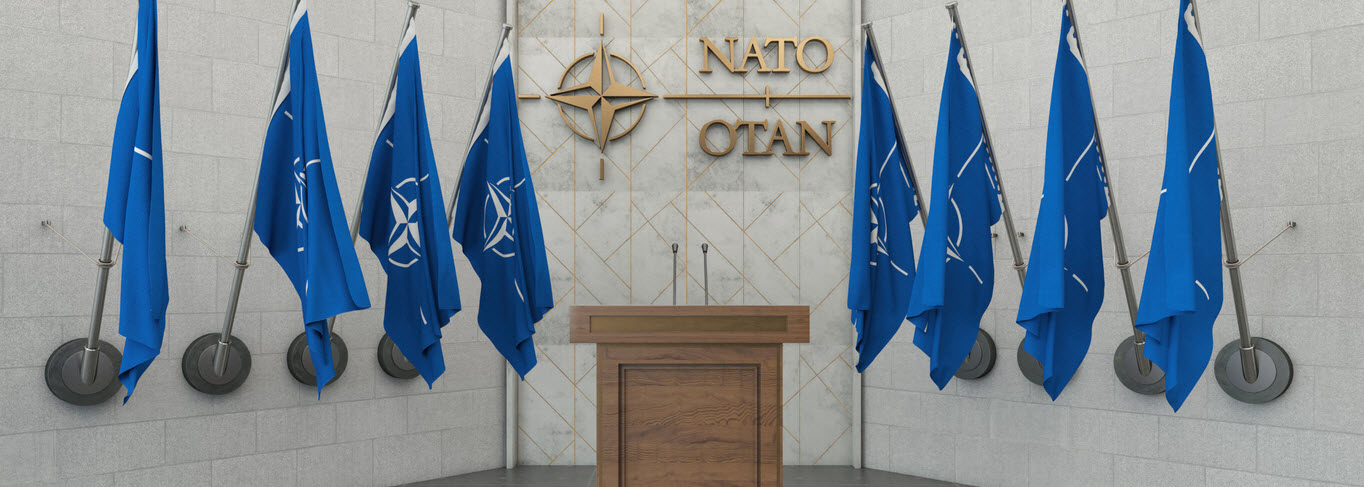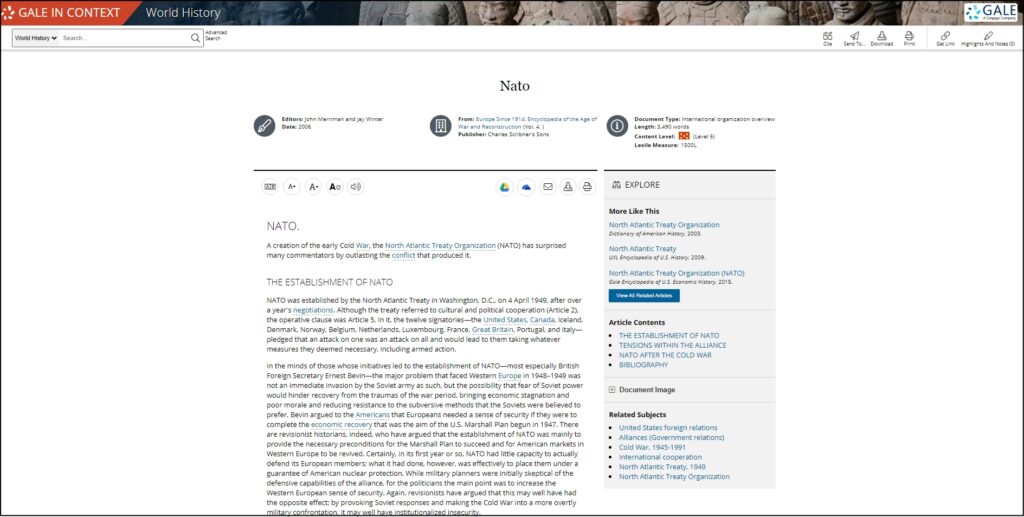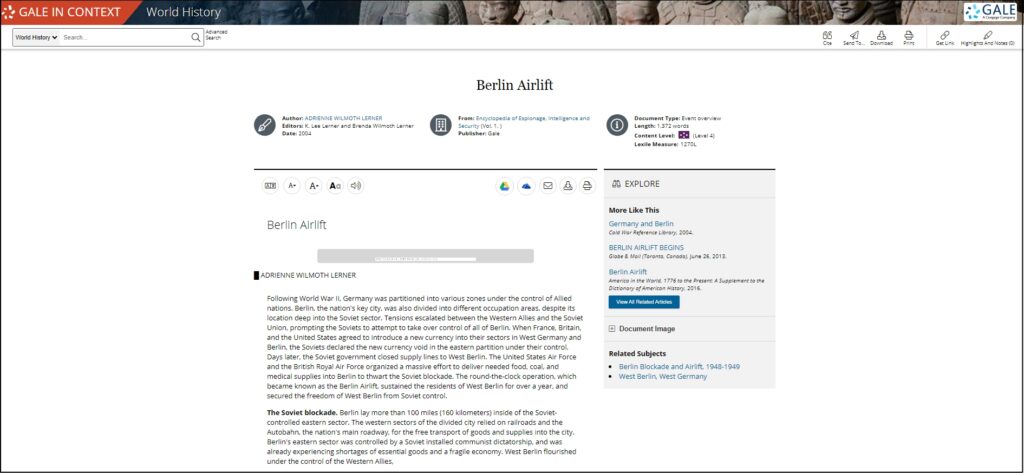| By J. Robert Parks |
The North Atlantic Treaty Organization, better known as NATO was founded seventy-five years ago this week, on April 4, 1949. A response to both World War II and the growing Cold War, the organization was designed to bind Europe and the United States closer together and to provide a defense against the Soviet Union. Educators and librarians will find numerous resources in Gale In Context: World History to help students understand both why the organization was formed and how it has functioned in the years since.
The motivations behind proposing NATO varied depending on the country. For some Europeans, especially the British, a primary goal was to stave off the isolationism that often seemed to take hold in the United States and which had delayed the U.S. entry into both World War I and World War II. European leaders of this persuasion hoped that a transatlantic organization would keep the United States engaged in European affairs.
For other Europeans, NATO was one of many organizations developed after World War II that was designed to unite Europeans (at least those outside of Eastern Europe) and stave off the deadly warfare that had plagued Europe for centuries. Other organizations that followed included the European Coal and Steel Community, which took coal and steel out of the hands of national governments and put them under international control, and the European Economic Community, which was formed out of the Treaty of Rome.
For the United States and some Europeans, NATO was primarily a military alliance that committed its members to come to each other’s aid in the event any member country was attacked. This was designed to prevent an invasion in Europe by the Soviet Union, which by 1949 had already started to control the communist states in Eastern Europe. The Soviet Union also appeared to be threatening countries in Central and Western Europe.
Students used to be surprised when they learned that the United States and Soviet Union were allies during World War II (now they’re more likely to be surprised there was a Soviet Union). Historians debate whether that transition from an alliance in the first half of the 1940s to fierce antagonism by the end of the 1940s was inevitable or not. Certainly, there was always likely to be a conflict over ideology, but it’s debatable whether it was doomed to turn into the Cold War that dominated the second half of the twentieth century.
The Berlin Blockade and Airlift of 1948 certainly convinced the Western countries that they needed to form a more structured alliance like NATO. Then the Korean War that began in 1950 solidified the U.S. desire to remain on a war footing and to protect its allies. The Soviet Union responded in 1955 by forming the Warsaw Pact, a military alliance between it and its communist satellite states in Eastern Europe. The standoff between the two sides lasted until 1989 when the Berlin Wall came down.
It might seem as if NATO would have lost much of its reason for being after the European Union’s formation and the dissolution of the Soviet Union, but instead NATO expanded, incorporating some of the countries that had been part of the Warsaw Pact. The alliance was also pivotal in bringing an end to the Balkan Wars after the breakup of Yugoslavia in the 1990s. The old isolationism reared its head during the Donald Trump administration, however. Even as NATO celebrated its seventieth anniversary in 2019, Trump criticized the European members for not spending enough on military spending. He also implied that the United States might not come to the defense of other alliance members if they did not contribute more financially. That outlook changed completely during Joe Biden’s administration. Although Ukraine is not a member of NATO, the organization has been at the forefront of helping supply Ukraine militarily after Russia invaded Ukraine in 2022. Russia’s belligerence also drove Finland and Sweden, who had resisted NATO membership for more than seventy years, to push to join NATO, and some have argued that Ukraine should also be invited to join. As with many organizations, NATO has adapted to changing times.
About the Author
J. Robert Parks is a former professor and frequent contributor to Gale In Context: U.S. History and Gale In Context: World History who enjoys thinking about how our understanding of history affects and reflects contemporary culture.




